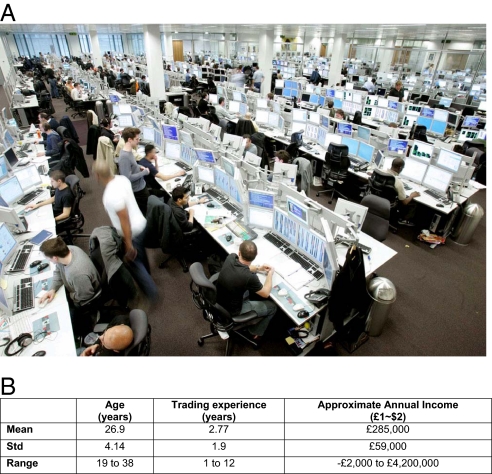Fig. 1.
The trading floor. (A) Trading desks are fitted with screens displaying live prices of bond, currency, commodity, and stock index futures. The desks also include computerized risk management systems, live newsfeeds, and a “squawk box” over which an economist comments on the economic statistics being released in the major global markets. The traders can trade a range of futures contracts, but most confine their attention to European and predominantly German stock indices or interest rate contracts. Traders typically look for intraday peaks and troughs in futures prices or search the screens for small price discrepancies both within and between markets. These trading opportunities may present themselves for no more than a few seconds, so traders have little time for analysis. When searching the screens, traders display a focused attention and physical readiness, appearing much like a tennis player at net. (B) Summary statistics for traders in the study. Negative income denotes trading costs that exceed P&L.

